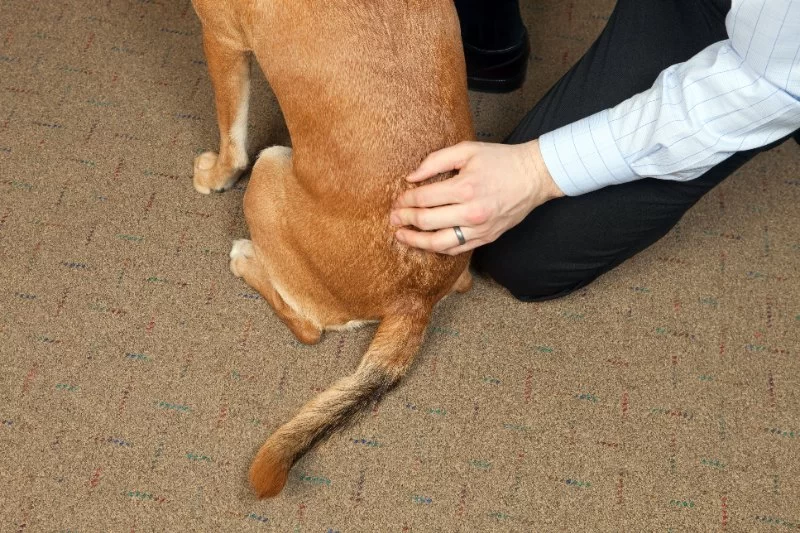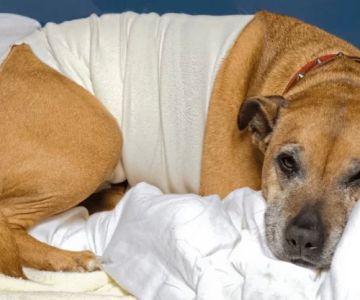- understanding-dog-scratching-at-tail-and-hind-legs
- common-causes-of-scratching-behavior
- how-to-observe-and-identify-symptoms
- real-cases-from-hidden-brook-veterinary
- treatment-options-and-when-to-seek-help
1. Understanding Dog Scratching at Tail and Hind Legs
If your dog is constantly scratching at its tail and hind legs, you’re not alone. It’s a common concern among pet owners, but the causes behind this behavior can vary widely—from something as simple as dry skin to more serious underlying health conditions. What’s important is to pay attention to the frequency, duration, and severity of the scratching to catch issues before they escalate.
Occasional scratching is normal. However, if your dog is biting, licking, or obsessively targeting the same areas, it’s time to investigate further. Understanding why this is happening is the first step toward helping your furry friend find relief.
2. Common Causes of Scratching Behavior
2.1 Fleas and Parasites: The Classic Culprit
Fleas remain one of the most frequent reasons for dogs scratching at their hindquarters and tail. These tiny pests love the warm, protected areas near the base of the tail, where they can bite and lay eggs. Even indoor dogs can get fleas from other pets, parks, or shared spaces.
Other parasites like mites and lice can cause similar irritation. A dog suffering from mange, for example, may scratch persistently and even lose hair in localized patches. If you notice red, inflamed skin or excessive shedding, parasites should be ruled out first.
2.2 Allergies: From Food to Environment
Just like people, dogs can have allergic reactions—some triggered by food ingredients, others by pollen, dust mites, or even cleaning products. These allergies often show up through skin reactions, particularly near the hind legs and tail area. If your dog’s itching seems seasonal or tied to a particular food, allergy testing might be in order.
2.3 Dry Skin and Dermatitis
Climate changes, poor nutrition, or excessive bathing can dry out a dog’s skin, leading to flakes and itchiness. In these cases, the scratching may be accompanied by dandruff-like flakes or tight, scaly patches. Dermatitis, whether caused by contact with an irritant or a bacterial infection, may also trigger discomfort in these same areas.
2.4 Anal Gland Issues
If your dog is scooting on the ground or obsessively licking near the tail base, the problem may lie deeper—literally. Impacted or infected anal glands can cause localized itching and pain, which dogs often try to soothe through scratching and biting at the hindquarters. This is something that requires veterinary attention to diagnose and treat properly.
3. How to Observe and Identify Symptoms
3.1 Behavioral Signs to Note
When dogs scratch due to discomfort, they often display specific patterns. Watch for repeated chewing or licking at the base of the tail, sudden yelping when touched, or restlessness during sleep. These signs can help you and your vet zero in on the root cause.
3.2 Skin Checks and Home Monitoring
Perform gentle skin checks at home. Look for redness, swelling, flea dirt (tiny black specks), rashes, or any broken skin. Take note of any new shampoos, cleaners, or diet changes that might correlate with the onset of symptoms. Keeping a journal of your dog’s symptoms can be helpful when seeking veterinary care.
4. Real Cases from Hidden Brook Veterinary
At Hidden Brook Veterinary, we recently treated a golden retriever named Milo who had been biting at his tail and hind legs for weeks. His owner had tried switching shampoos and flea collars, but the problem persisted. After a detailed skin analysis and allergy testing, we discovered that Milo was reacting to a protein in his diet. Once switched to a hypoallergenic formula, the scratching diminished within days.
In another case, a senior pug named Daisy came in for what her owner thought was a flea infestation. But upon closer examination, our team found an anal gland infection causing her to scratch excessively at her hindquarters. A quick in-office treatment and follow-up antibiotics resolved the issue—and Daisy was back to her tail-wagging self.
5. Treatment Options and When to Seek Help
5.1 At-Home Care and Prevention
For mild cases, oatmeal baths, vet-approved moisturizers, and regular grooming can reduce irritation. Ensuring your dog is on a consistent flea prevention routine is also crucial. Sometimes, the solution lies in simple changes—like adjusting diet, reducing allergens, or using more natural cleaning products at home.
5.2 Professional Veterinary Support
If your dog’s scratching persists for more than a few days, gets worse, or leads to bleeding or hair loss, it's time to consult a veterinarian. Conditions like mange, infections, or impacted glands need prompt professional care. At Hidden Brook Veterinary, we offer comprehensive diagnostics and personalized treatment plans that target the root cause—not just the symptoms.
Your dog can’t tell you what’s wrong, but their scratching is trying to. With attentive care, good observation, and veterinary guidance, your four-legged friend can get back to comfort, play, and peaceful naps in no time.












